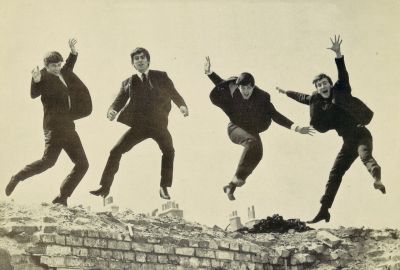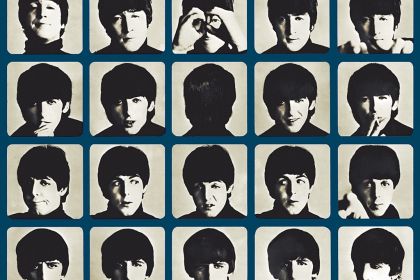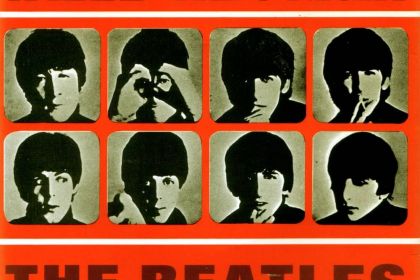Music Theory
Beatles songs composed with just three primary chords

The Beatles' Twist and Shout single cover
The harmonic analysis of The Beatles' output reveals their particular devotion to the Ionian mode, which is found in fifty of their songs, and ten of those tracks are written using just three primary chords.
One of the simplest and at the same time most compelling songwriting techniques in Western music canon is the usage of only three chords known as the primary chords of the Ionian mode. These triads invariably appear in the initial bars of classical works, though most notably they are used to form final cadences to close musical sections.
In theory, chords rooted in the first, fourth, and fifth degrees of any diatonic scale are called the primary chords as they form the basis of the tonic, subdominant, and dominant harmonic functions. When correctly organized, this interaction of musical functions can produce tension and then resolve it. This is an essential instrument for creating a harmonic pulsation in a musical narrative.
Combinations of these three primary chords in the Ionian major mode have evolved into a well-known three-chord songwriting technique that dominates the pop music genres including blues and rock and roll.
As for The Beatles' output, one of the clearest examples of this primary chord combination is shown in All Together Now. In the harmonic analysis of the verse chord chains, the scale degrees (denoted with Roman numerals) show the following progression in the key of G major: G–D7–G or I–V7–I. That is, the verse is accompanied by the V7–I looped musical turnaround known as an authentic cadence—an essential technique used for closing consequent music phrases.
The chord chain that appears in the song's choruses includes all three primary chords: G–C–G–C–D7 or I–IV–I–IV–V7. The progression ends with the V7 dominant seventh chord forming a half authentic cadence typical of antecedent musical phrases. It also exposes another classical musical turnaround called the plagal cadence that appears in the middle of the chain IV–I.
Listen to All Together Now by The Beatles:
In a very similar way, three primary chords are combined in the verses of The Ballad Of John And Yoko composed in E Ionian: E–A–E–B7–E–B7 or I–IV–I–V7–I–V7. The song's verses develop against the background of a sole tonic function represented by the E triad and the E7 seventh chord rooted in the first scale degree: E–E7 or I–I7.
Listen to The Ballad Of John And Yoko (Remastered 2015) by The Beatles:
In the first progression of Maggie Mae—written in the key of G major—we see a familiar combination of plagal and half authentic cadences:
- G–C–G–D or I–IV–I–V;
- G–C–D7–G or I–IV–V7–I.
The second chain shows one of the most energetic musical turnarounds, IV–V7–I. In most cases, it closes classical musical sections with a more distinct air of finality.
Listen to Maggie Mae (2021 Mix) by The Beatles:
The chord progressions of Rain are built in a very similar way:
- G–C–D–G or I–IV–V–I;
- G–C–G or I–IV–I.
Watch The Beatles perform Rain:
The two following songs are built on a nearly identical looping progression, in which the juxtaposition of subdominant and dominant chords produces a harmonic tension resolved by the tonic chord:
- Dig It: in F Ionian F–B♭–C–B♭ or I–IV–V–IV;
- Don’t Pass Me By: in C Ionian C–F–G7–F–C or I–IV–V7–IV–I.
The chord progression of Why Don’t We Do It In The Road?—written in the key of D major—reveals a typical blues formula: D–D7–G–G7–D7–A7–G7–D7 or I–I7–IV–IV7–I7–V7–IV7–I7. This cliched approach can be found in most blues songs including Terraplane Blues, Statesboro Blues, and Ramblin' on My Mind.
Listen to Why Don't We Do It In The Road? (Remastered 2009) by The Beatles:
Baby, You’re A Rich Man is accompanied by the chord progressions in the key of C major. It shows several types of authentic cadences:
- G–C–G7 or V–I–V7 for verses;
- G–F–G7–C or V–IV–V7–I for verses;
- G–C or V–I for choruses.
Listen to Baby, You're A Rich Man (Remastered 2009) by The Beatles:
Tell Me What You See, written in the key of G major, showcases a fairly developed harmony by providing separate progressions for different song sections. The verses are mostly built on a powerful cadence IV–V–I and uses all three primary chords except for the second line that uses a plagal cadence IV–I:
- G–C–D–G or I–IV–V–I for lines 1, 3, 4;
- G–C–G or I–IV–I for line 2.
Similar progressions are seen in the choruses:
- C–G or I–IV for lines 1, 2, 3;
- C–D–G or IV–V–I for line 4.
The chord chain found in the bridges alternates plagal and authentic cadences: G7–C–G–D7–G or I7–IV–I–V7–I. Note that the tonic seventh chord G7 is replaced by the C subdominant chord, fully corresponding to the classical canons. More specifically, the interval between the root of the seventh chord and the following chord forms a perfect fifth. This equally applies to the D7–G authentic cadence.
Listen to Tell Me What You See (Remastered 2009) by The Beatles:
Ob-La-Di, Ob-La-Da—written in the key of B♭ major—is another Beatles track whose chord progression is based on three primary chords.
As you can see, the songs with three primary chords of the Ionian mode tend to be lively, cheerful, even mischievous. They often have a playful subtext as their harmony contains no minor chords and generates a more positive mood. Below are three more Beatles songs with three-chord verses and more developed Ionian-mode progressions popping up in other song sections.
The eight-line verses of She’s A Woman are accompanied by typical progressions (in the key of A major) with only three primary chords:
- A–D7–A or I–IV7–! for lines 1-5;
- E7–D7–A–D7–A–E7 or V7–IV7–I–IV7–I–V7 for lines 6-8.
In the bridges, the harmony adds minor triads rooted in the third and sixth degrees of the Ionian scale known as the mediant and submediant chords: C♯m–F♯m–C♯m–D–E or iii–vi–iii–IV–V.
Listen to She's A Woman (Remastered 2009) by The Beatles:
The verses of You Can’t Do That, composed using three major seventh chords in the key of G major, demonstrate a typical blues formula: G7–C7–G7–D7–C7–G7–D7 or I7–IV7–I7–V7–IV7–I7–V7.
By implementing all three minor chords of the Ionian mode, this progression stands in stark contrast to the rest of the song:
- B7–Em–Am–Bm–G7 or V7/vi→vi–ii–iii–I7;
- B7–Em–Am–Bm–D or V7/vi→vi–ii–iii–V.
The chorus opens with the B7 chord that does not belong to the Ionian mode and is marked in red. Here we have an example of tonicization of the sixth degree of the scale—the temporal shift of the tonal center to the E minor implemented by the B7 secondary seventh chord, sometimes referred to as the secondary dominant. This technique is often found in classical music but rarely used by pop songwriters who usually strive to simplify song harmonies as much as possible.
Listen to You Can't Do That (Remastered 2009) by The Beatles:
Written in the key of B major, One After 909 uses three primary chords in its progressions with only one deviation from this pattern:
- B–E–B–F♯7–B or I–IV–I–V7–I for verses;
- E–B–C♯–F♯ or V–I–V7/V→V for bridges.
In song bridges, there is another case of tonicization of the fifth degree of the scale. The red-marked C♯ secondary chord temporarily shifts the tonal center to F sharp major.
Listen to One After 909 (Remastered 2009) by The Beatles:
In conclusion, it is worth noting that The Beatles' repertoire includes a number of covers composed with only three primary chords. Here is an abridged list:
- Everybody’s Trying To Be My Baby
- Bad Boy
- Boys
- Dizzy Miss Lizzy
- The Hippy Hippy Shake
- Kansas City/Hey-Hey-Hey-Hey!
- Long Tall Sally
- Money (That’s What I Want).
Explore how The Beatles use other musical modes in our articles:
- Beatles songs featuring Lydian mode
- 9 Beatles songs that combine harmonic major with Ionian mode
- Beatles songs with Dorian mode
- Beatles songs with harmonic minor and Aeolian modes
- Things We Said Today: the only Beatles song featuring Phrygian mode
- Golden Slumbers: lyrical origins of the famous Beatles lullaby
- Picardy third: cadence for a happy ending in classical music and popular songs
Discover more songs composed in Ionian major mode and check out their harmonic analysis in the following articles:
- 6 songs to unpack Ionian mode and the major scale
- 9 Beatles songs that combine harmonic major with Ionian mode
- Longfellow Serenade and the fireside poet that kindled Neil Diamond's song
- Wildwood Weed: the cheeky ganja farmers song that got banned
- Sugaree: Jerry Garcia's song referencing his lyricist's criminal past
- D'yer Mak'er: meaning of Led Zeppelin's most controversial song
- Seven Seas of Rhye: song of imaginary land brought to life by Ionian and Mixolydian modes
- Coal Miner's Daughter was forced to remove a third of the lyrics from her autobiographical song
- I Wanna Be Sedated: pure classical harmony cementing the Ramones' hit in punk rock history
- Hasta Mañana: the origins of the best ABBA ballad



